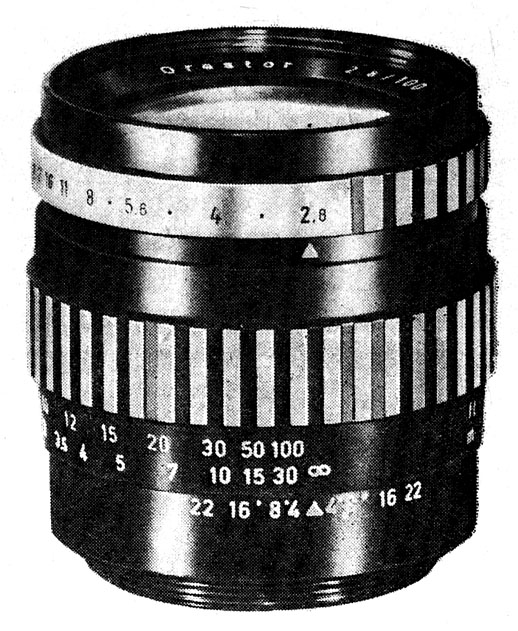LENS FITTING.
The frame of the lens has a decisive influence on its quality. Made without due precision, it significantly worsens the correction of even the best set of lenses. Too soft metal (wrong aluminum-magnesium alloy) deforms very easily, and the slightest hit with the edge of the lens causes it to bend and prevent the focus screw from moving.
35mm camera factories usually use large ones, with standardized dimensions, lens mounts, in which the lens assembly is embedded so deeply, that the luminaire somewhat replaces the sun visor. This avoids reflexes (thanks to the recessed frame), but it makes the braces thick and bulky (drawing).

Drawing. Standardized lens mount (for screwing).
In addition, they do not slide into the camera body. They make it easier to use filters, because thanks to the standardization of the diameter and thread of the frame, one and the same screw-in or plug-on filter is suitable for lenses with different relative apertures and different focal lengths.
In cameras with interchangeable lenses, lenses with a thread for screwing or with a bayonet holder equipped with a latch that secures the lens on the front of the camera are used.
Screw-in lenses are the safest to use, for there is no fear with them, that they may fall off the apparatus during operation.
There is a tendency to standardize the lens frames of different factories, so that they can be used for different cameras, regardless of origin. Standardization was widely used by the Japanese, whose lenses are suitable for a large number of cameras, including European production.
In Europe, we generally have two ways of attaching the lens to the camera: Practica Pentacon thread (GDR), now widely used in the world (M 42/1) and Exakta-Exa Ihagee bayonet mount (GDR). Moreover, there are many different solutions (especially in the USSR and the GFR).
However, it should not be forgotten, that the standardization of the lens mount will only then have practical significance, when it comes to the standardization of the distance between the head of the apparatus of different factories and the plane of the film.
The thread holder is therefore used much more frequently, but requires much more time to change the lens than the bayonet mount. In use, both systems produce equally reliable results.